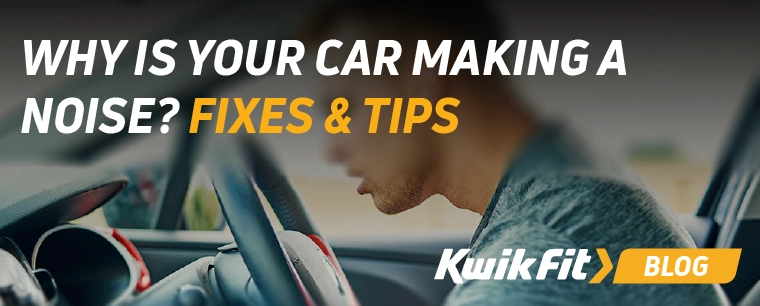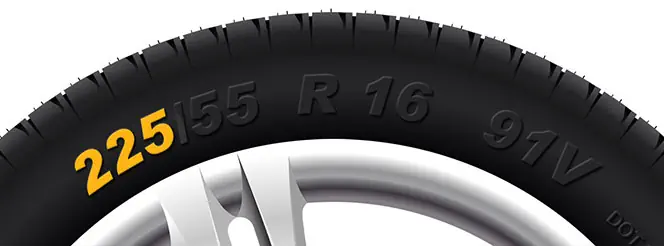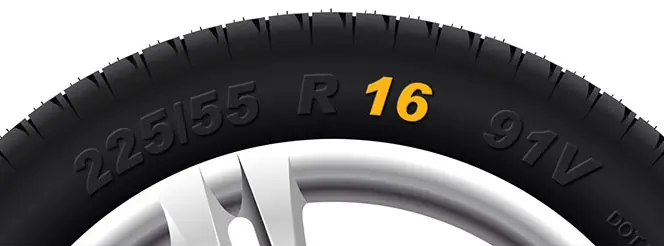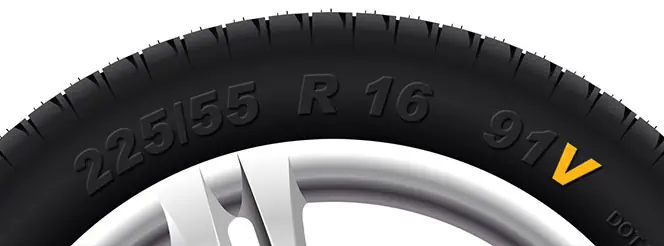The Ultimate Guide To Beating Driving Anxiety
Jessica Bird | Thursday 18th September 2025 11:15am
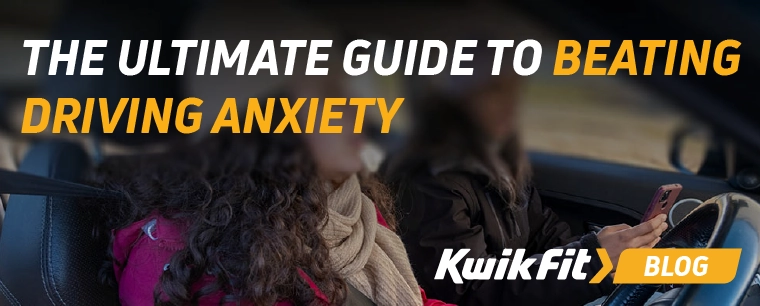
For many people, driving a car can cause a great deal of worry and stress, even when it comes to short, simple journeys.
Whether youíve had a road accident that knocked your confidence, find driving a challenge, or have just passed your test and have limited experience, there are many reasons why you might be apprehensive about getting behind the wheel.
However, the good news is that there are plenty of simple ways you can overcome your anxiety about driving and remain calm and confident while on the road.
Hereís a complete guide to overcoming driving anxiety once and for all.
Why does driving give me so much anxiety
Lots of people experience a degree of fear while driving, usually caused by one of the following things:
- For some, anxiety is tied to very specific situations, such as suffering a loss of control or driving at high speeds, in difficult weather conditions, or at night.
- Travelling in unfamiliar places can also trigger fear, as can driving alongside big vehicles like lorries or buses.
- Other motorists have more generalised anxiety. For these people, any kind of journey can make them feel nervous.
- A fear of driving is more common among those whoíve recently passed their tests, but it can affect anyone.
- In some cases, anxiety develops after an accident or near miss, while for other people it arises unexpectedly with no obvious cause.
Can phobias cause driving anxiety?
There are also a range of phobias that can make driving much more stressful. For example, dystychiphobia is a fear of accidents, and it tends to make people try to avoid any situations that increase the risk of physical danger.
Claustrophobia, the fear of enclosed spaces, can also impact drivers because it can easily transfer to the prospect of being inside a car. And, while itís not common, some people are affected by hodophobia, which is a fear of travel.
How stop being nervous when driving?
Whether you feel nervous because you only recently passed your test, youíve taken a break from driving, youíve suffered a bad experience behind the wheel or for any other reason, there are steps you can take that may help you to combat your anxiety and become a better driver as a result.
Re-learn the basics
If you havenít driven in a while, re-learning the skills that you needed in order to pass your driving test can help to refresh your memory, and the more you practise, the more comfortable youíll start to feel. (Kwik Fitís Guides can help you with this).
Drive often
Practice is the key to becoming a better and more confident driver. If youíre very nervous, start off with a friend (preferably an experienced driver) in the car with you. They can help you to navigate, provide reassurance and keep you calm.
However, itís important to practice driving solo, too. Taking away the safety net of a trusted passenger can be scary, but itíll become less so every time you drive on your own. Before long, itíll feel like second nature.
Push yourself and drive somewhere new
A familiar route is easy to follow, but a new one shakes you out of your comfort zone and gives you the skills to prepare for anything. Youíre likely to face new situations at some point in the future, so do it now to build up your confidence.
Choose a quiet time of day, take it slow, and youíll soon be giving yourself a well-earned pat on the back for arriving without incident.
Focus on your own driving
While you need to be aware of other vehicles on the road, you donít need to feel intimidated by them. Another driver may be in a hurry and want you to speed up, but that isnít your problem. Just:
- Stick to the speed limit.
- Drive carefully.
- And try not to worry about anyone else.
Even if you make a mistake, itís unlikely that youíll ever see the other driver again, so donít stress if they start honking their horn.
Get to know your car
You know the basics of driving your car, but do you know where the fog lights are? Which button do you press if the windscreen steams up, and how do you control the windscreen wiper speed? These tiny details can be so important when youíre trying to concentrate on the road. Take some time with your carís manual and get to know each control inside out.
Practice manoeuvres
When going back to basics, focus on the aspects of driving that make you feel nervous or stressed, whether itís parallel parking, turning in a tight space or clutch control on an incline.
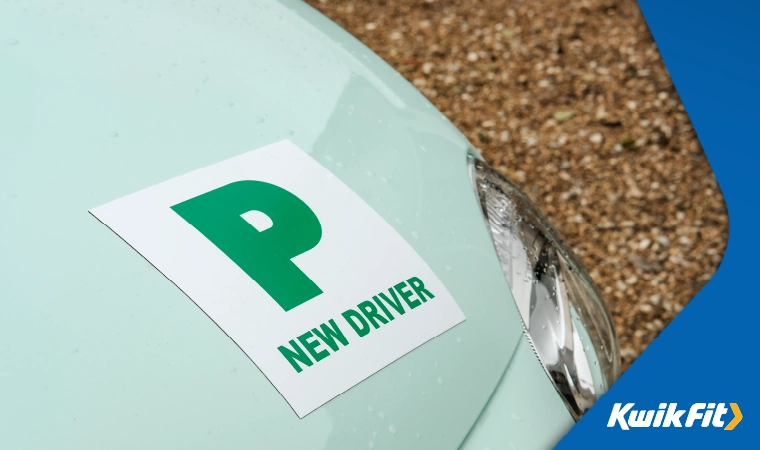
Use green 'P' plates
Green ĎPí plates are used to show other motorists that youíve just passed your test and are therefore likely to be more cautious or hesitant. Putting them on your car can help to ensure that other road users behave more courteously towards you, allowing you to feel more relaxed.
Bear in mind that you can leave these plates on for as long as you want, so they can still come in handy even if you passed your test a long time ago.
Book refresher lessons if you've not driven in a while
If you havenít driven for a long time, it might be a good idea to book yourself a few refresher lessons. These sessions can remind you how to cope with a variety of potentially stressful driving situations and give you a welcome confidence boost.
Avoid any distractions
You may feel like having the radio on will relax you, but it can often have the opposite effect. If you do have the radio on, turn it down low. Although hands-free calls are legally allowed, itís best to avoid them as they can also be very distracting.
Reassure yourself that caution is a good thing
Donít be too hard on yourself for being overly cautious or underconfident when in control of a vehicle. Driving can be hazardous, so it can be a good thing to go slowly and exercise caution.
Itís completely fine to apply the brakes before a blind bend, or ask yourself, ďwhat if someone pulls out of that junction suddenly?Ē and adjust your speed accordingly.
Plan your journey
Plan your journey before you leave to avoid heavy traffic or unexpected diversions and give yourself plenty of time to arrive. If youíre feeling apprehensive, itís a good idea to choose routes that youíre familiar with and that are less challenging.
Avoid rush hour & peak times
If you can, try not to drive during rush hour or at busy times during the weekend, as this can put added pressure on you and make you late.
Make sure the weatherís on your side
Itís also worth avoiding travelling during bad weather, such as heavy rain, snow, or ice, as this can make driving more difficult. Check the forecast before you set off and consider delaying your journey to a later time if you feel anxious about the weather conditions.
Virtually drive the route with Google Maps
A lot of this mapping can now be done for you with tools like Google Maps (though, be sure to invest in an actual phone holder to not fall foul of the law). Some drivers even like to ďdoĒ the route using Google Mapsí street view feature.
Keep your cabin calm
There are also a few things you can do to reduce anxiety and remain relaxed while actually out on the road:
- Switch off your phone before you set off (unless using it as a map) to avoid distraction.
- Practise calming breathing techniques.
- Play some calming music and a low volume.
Remind yourself that you can pull over
If stress starts to get the better of you and you begin to feel panicked or overwhelmed, gradually reduce your speed and stop in a safe place. Take as long as you need to regain composure and only continue driving when you feel ready and safe to do so. You may find it helps to get out of the car and go for a walk to get some fresh air and clear your head.
Practise good driving habits
Chances are, youíve probably forgotten some of the techniques you learnt when preparing for your driving test and picked up some bad habits along the way. Some of these behaviours could be contributing to your driving anxiety without you even realising it.
- Although it might sound obvious, always remember to check your blind spots and mirrors, signal with plenty of time, and drive within the speed limit.

Make sure your car is safe
Carrying out car safety checks is an essential part of motoring for all drivers. Performing these checks can also provide you with added peace of mind when you climb into the driverís seat.
Tyres
Make sure that your vehicleís tyres are up to scratch. Legally, car tyres in the UK must have a tread depth of at least 1.6mm - and safety experts generally recommend a depth of 3mm or more.
- Having tyres with a good level of tread will help you to keep control of your car by minimising your stopping distances and cutting the risk of skidding or aquaplaning.
- Make sure you keep your tyres pumped up to the correct pressure too, and watch out for signs of damage like cracks in the sidewalls. If the tread is getting low or you spot any damage, itís time to get replacement tyres.
Windscreen, lights & fluids
You may also want to test your lights and windscreen wipers, and make sure the oil and windscreen washer levels are topped up. If youíre unsure about how to carry out these maintenance checks, look at your ownerís manual or seek help from a professional technician.
For a full list of checks you can do at home to reduce driving anxiety, why not check out our pre-mot checklist.
Peace of mind from the experts
If youíre experiencing driving anxiety due to a problem with your vehicle, get in touch with the experts at your local Kwik Fit and weíll be happy to help.
One of the best things to feel safer in your car is to make sure youíre confident in your carís ability to accelerate and slow down whenever you need it to. Itís crucial, therefore, to ensure youíre regularly having your car checked and serviced by experienced professionals.
The experts at your local Kwik Fit centre are always on hand to help.
Any facts, figures and prices shown in our blog articles are correct at time of publication.
Featured Articles
Is it Illegal to Drive With One Headlight?
Saturday 19th July 2025
Wondering if itís illegal to drive with one headlight? Learn about the safety risks and penalties of illegal blown bulbs and why you should fix them promptly.
Air Con in EVs & Hybrids: Experts Answer Your Questions
Monday 30th June 2025
Does air con drain EV batteries? Can you use the air con while charging an electric car? Find out the answers to these questions & more from Kwik Fitís experts.
Why Is Your Car Making a Noise? Fixes & Tips
Friday 13th June 2025
When your car starts making unexpected noises, it can certainly be quite disconcerting; it may be nothing to worry about, but hereís what you need to know.




